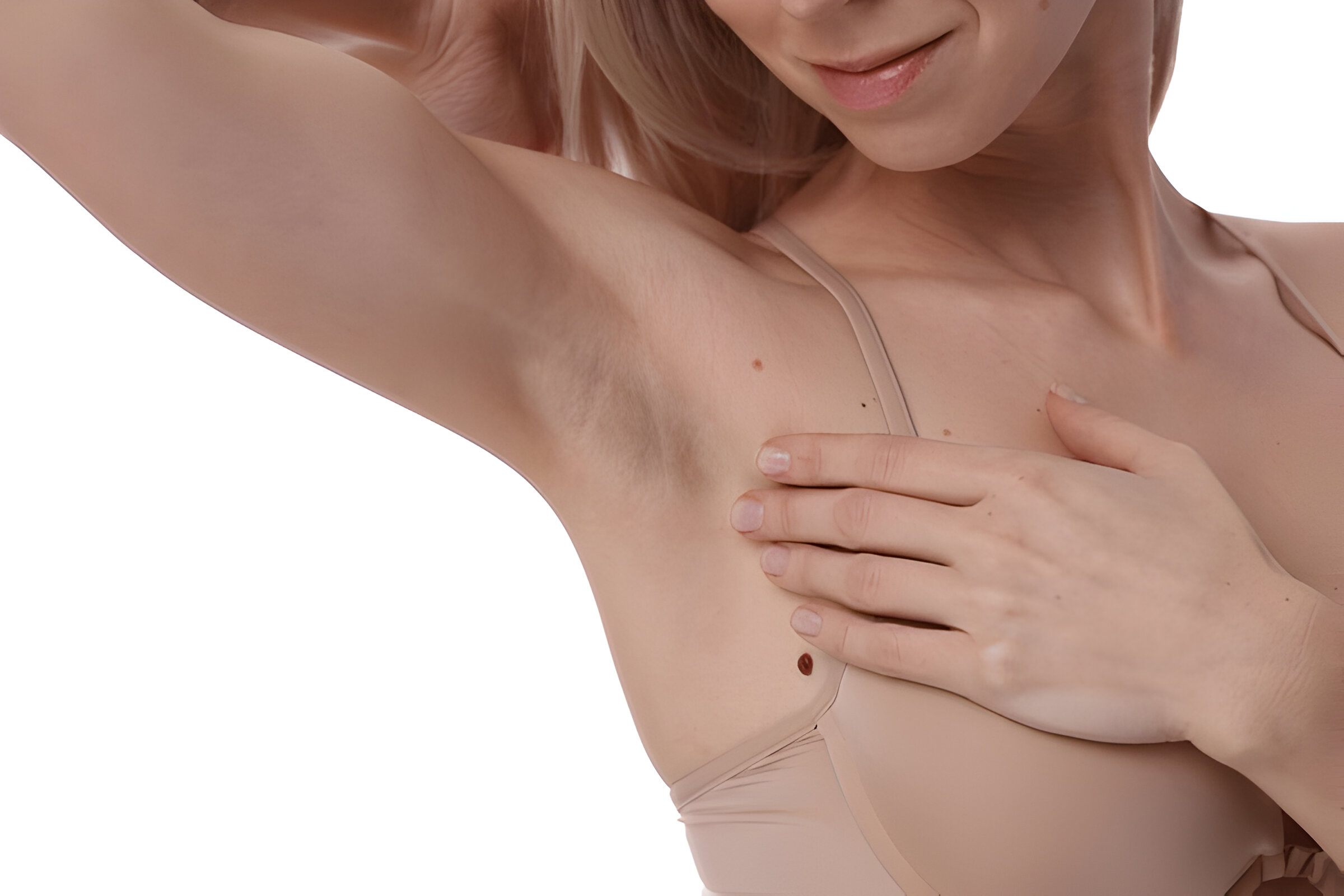Skin tags are common, harmless growths that can appear anywhere on the body, causing discomfort and self-consciousness for many individuals. While often benign, their presence in visible areas or sensitive regions like the groin can lead people to seek skin tag removal options. From at-home remedies to professional dermatologist procedures, various methods are available to address these small flesh-colored or brown growths.
This comprehensive guide explores the causes of skin tags, including factors such as obesity, pregnancy, and diabetes, and delves into effective removal techniques. Readers will gain insights into safe at-home methods, learn about professional removal options, and discover essential aftercare practices. Whether concerned about privacy or looking to boost collagen production post-removal, this article provides valuable information to help individuals make informed decisions about managing skin tags.
Understanding Skin Tags: Causes and Characteristics
Skin tags, also known as acrochordons, are small, benign growths that hang from the skin. These soft, flesh-colored or brown protrusions consist of collagen fibers, ducts, nerve cells, and fat cells covered by a layer of epidermis. They typically range from 1mm to 1cm in size and are attached to the skin by a thin stalk called a peduncle.
Common Locations
Skin tags tend to develop in areas where skin rubs against skin or clothing, causing friction. Common locations include:
- Neck
- Armpits
- Eyelids
- Groin
- Under the breasts
- Buttock folds
- Thighs
Risk Factors
Several factors increase the likelihood of developing skin tags:
- Age: The prevalence of skin tags tends to increase up to age 60.
- Obesity: Excess weight leads to more skin folds and friction.
- Pregnancy: Hormonal changes and high levels of growth factors contribute to skin tag formation.
- Diabetes: Insulin resistance has been linked to skin tag development.
- Genetics: A family history of skin tags increases the risk.
- Hormonal imbalances: Conditions like polycystic ovary syndrome (PCOS) may increase susceptibility.
- Human papillomavirus (HPV): Some types of HPV have been associated with skin tags.
When to Be Concerned
While skin tags are generally harmless, there are instances when medical attention is necessary:
- Rapid growth or changes in size
- Pain, redness, or swelling
- Bleeding or irritation
- Multiple tags appearing suddenly
- Tags resembling other skin conditions
It is crucial to consult a healthcare professional if any of these symptoms occur, as they may indicate an underlying health issue or require further examination to rule out more serious conditions.
At-Home Skin Tag Removal Methods
While healthcare providers recommend professional removal of skin tags, some individuals may opt for at-home methods. It is crucial to approach these techniques with caution, as they carry potential risks and may not be as effective as professional treatments.
Natural Remedies
Several natural remedies have been suggested for skin tag removal, although their effectiveness lacks scientific backing:
- Tea Tree Oil: Dilute tea tree oil with a carrier oil and apply it to the skin tag using a cotton swab. Cover with a bandage overnight and repeat until the tag falls off.
- Banana Peel: Place a piece of banana peel over the tag, secure it with a bandage, and leave it overnight. Repeat this process until the tag dries out and falls off.
- Apple Cider Vinegar: Apply apple cider vinegar to the skin tag using a cotton swab for 15-30 minutes daily. The acidity may break down the tissue surrounding the tag.
- Garlic: Apply crushed garlic to the tag and cover it with a bandage overnight. Wash the area in the morning and repeat until the tag shrinks and disappears.
Over-the-Counter Products
Several over-the-counter options are available for skin tag removal:
- Cryotherapy Kits: These kits use freezing technology to remove skin tags. However, they may not reach the necessary temperature (-4°F to -58°F) to effectively remove the tags.
- Removal Creams: Some creams claim to remove skin tags, but their effectiveness is not scientifically proven. Caution is advised, as some may cause skin irritation or dermatitis.
- Removal Patches: These adhesive patches contain ingredients like salicylic acid or essential oils. However, they are not FDA-approved and may affect the surrounding skin.
Precautions and Safety Tips
When attempting at-home skin tag removal, consider the following precautions:
- Avoid removing skin tags near the eyes, genitals, or other sensitive areas.
- Do not attempt to remove large or long skin tags at home.
- Seek medical attention if the skin tag is causing pain, bleeding, or itching.
- Be cautious with natural remedies, as they may cause skin irritation or allergic reactions.
- Consult a healthcare provider before using any over-the-counter removal products.
Professional Skin Tag Removal Techniques
For individuals seeking effective and safe removal of skin tags, professional medical procedures offer reliable solutions. These techniques, performed by qualified healthcare providers, ensure precise removal with minimal risk of complications.
Cryotherapy
Cryotherapy involves the use of extreme cold to remove skin tags. In this procedure, liquid nitrogen is applied directly to the skin tag, causing the cells to freeze and die. The process typically includes:
- Application of liquid nitrogen to the skin tag
- A brief stinging or burning sensation during the procedure
- Gradual shrinking and falling off of the dead tissue over a few weeks
Cryotherapy has several advantages:
- Non-invasive nature
- Quick procedure, often completed in a single office visit
- Minimal scarring
- Effectiveness in removing skin tags
Cauterization
Cauterization, also known as electrocautery, uses heat to burn away skin tags. This method has the following characteristics:
- Application of local anesthesia for patient comfort
- Use of a heated probe to burn off the skin tag
- Immediate cauterization of the wound, reducing bleeding and infection risk
Electrocautery has specific benefits:
- Precise targeting of skin tags
- Minimal damage to surrounding skin
- Efficiency in treating multiple skin tags in one session
Surgical Excision
Surgical excision involves cutting off the skin tag using surgical instruments. The procedure typically includes:
- Administration of local anesthesia
- Careful removal of the skin tag using surgical scissors or a scalpel
- Immediate results with little to no trace of the former growth
Benefits of surgical excision include:
- Precise control, especially for larger skin tags
- Clean removal, reducing infection risk
- Virtually painless procedure due to local anesthesia
Ligation
Ligation is a technique that cuts off the blood supply to the skin tag. The process involves:
- Wrapping a surgical thread around the stem of the skin tag
- Gradual death of skin tag cells due to lack of blood supply
- Eventual twisting or pulling off of the skin tag
This method has the advantage of being a relatively simple procedure that can be performed by a dermatologist.
Aftercare and Prevention
Post-Removal Care
After skin tag removal, proper care is essential to ensure optimal healing and minimize complications. The specific aftercare practices depend on the removal method used:
- Surgical Excision:
- Keep the area clean by washing with soap and water once or twice daily
- Gently pat the area dry with a paper towel
- Apply petroleum jelly or antibiotic ointment as recommended
- Avoid using antibacterial soaps or products containing alcohol, peroxide, or iodine
- Cryotherapy:
- Do not puncture or pop any blisters that form
- Use adhesive bandages to protect the area until healed
- Electrocautery:
- Follow the doctor’s instructions regarding wound dressing
- Allow scab formation and avoid picking at it
- Clean the area gently and apply antibiotic ointment as directed
It is crucial to monitor the treated area for signs of infection or complications. Seek medical attention if there is excessive pain, swelling, pus, bleeding, or fever above 100°F.
Preventing Future Skin Tags
While it is not possible to guarantee skin tag prevention, individuals can take steps to reduce their likelihood:
- Maintain a healthy weight to minimize skin folds
- Avoid tight-fitting clothing and jewelry that may cause friction
- Keep the skin clean and moisturized, especially in areas prone to skin tags
- Practice good hygiene, particularly in the neck area
- Avoid accessories that rub against the skin, especially on the neck
By adopting these preventive measures, individuals can be proactive in minimizing the occurrence of skin tags. However, it is important to note that some people may be genetically predisposed to developing skin tags, and complete prevention may not be possible in all cases.
Conclusion
Skin tag removal has a significant impact on both physical comfort and self-confidence. The various methods discussed, ranging from at-home remedies to professional procedures, offer individuals a range of options to address these common skin growths. While natural treatments and over-the-counter products might be tempting, it’s crucial to approach them with caution and consider seeking professional help for safe and effective removal.
To wrap up, proper aftercare and preventive measures play a key role in managing skin tags and reducing their recurrence. By maintaining good hygiene, avoiding friction, and keeping an eye on potential risk factors, individuals can take proactive steps to minimize the development of new skin tags. Remember, while skin tags are generally harmless, it’s always wise to consult a healthcare provider if you have any concerns about changes in your skin.
FAQs
1. What methods are effective for removing skin tags?
Skin tags can be effectively removed through various surgical procedures, including cryosurgery. Additionally, some home remedies and over-the-counter products may help in drying out skin tags, leading to their detachment. Skin tags are benign, soft growths that typically develop in areas like the neck, armpits, breasts, groin, and eyelids.
2. Which skin tag removal products are considered the best in 2023?
As of 2023, the top skin tag removers include:
- Best overall: Dr. Scholl’s Skin Tag Remover.
- Best for freezing: Compound W Skin Tag Remover, priced at $13.39.
- Best formula: Gsebr Milia Remover, available on Amazon.
- Easiest to apply: TOPNaturePlus Skin Tag Remover.
- Best removal device: OPHERA Skin Tag Remover.
3. How does vinegar work to remove skin tags?
Vinegar, particularly apple cider vinegar, is believed to be effective in removing skin tags because its acetic acid component may break down the tissue around skin tags, leading to their removal over time.
4. Is it safe to cut off a skin tag by yourself at home?
While it is possible to remove small skin tags at home using sterile cuticle scissors, it is generally safer to have them removed by a healthcare professional. If you choose to remove a skin tag yourself, ensure it is small and that you use clean, sharp scissors.











